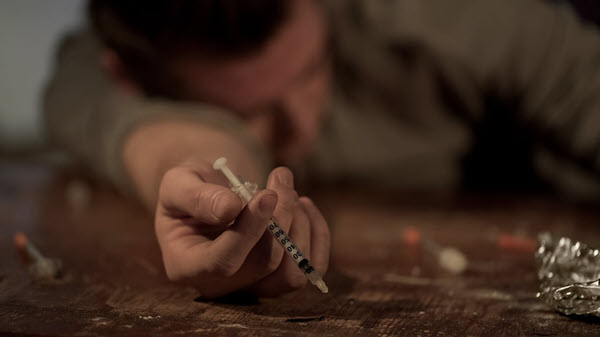 I paid only tacit attention to the illicit drug epidemic that defined much of the late 1960s, as I was occupied with school and other pursuits. But when I entered Pharmacy School, it certainly became a hot topic for discussion. Many of my professors proclaimed it to be the worst example of blatant substance abuse they could ever have imagined occurring. It was bad…very bad. Heroin and psychedelic use were rampant, while at the same time, synthetic opioids such as Percodan and Percocet were launched by Big Pharma and approved by the FDA. I wonder what my erstwhile professors would say about today’s opioid epidemic. I’ll be very clear: Today’s crisis is unprecedented – and far surpasses opiate use when such substances were not regulated by prescription in the early 1900s, as well as the aforementioned 1960s.
I paid only tacit attention to the illicit drug epidemic that defined much of the late 1960s, as I was occupied with school and other pursuits. But when I entered Pharmacy School, it certainly became a hot topic for discussion. Many of my professors proclaimed it to be the worst example of blatant substance abuse they could ever have imagined occurring. It was bad…very bad. Heroin and psychedelic use were rampant, while at the same time, synthetic opioids such as Percodan and Percocet were launched by Big Pharma and approved by the FDA. I wonder what my erstwhile professors would say about today’s opioid epidemic. I’ll be very clear: Today’s crisis is unprecedented – and far surpasses opiate use when such substances were not regulated by prescription in the early 1900s, as well as the aforementioned 1960s.
Today, more people succumb to drug overdoses than any other type of accidental death. A confluence of circumstances is associated with this, but physician overprescribing, combined with easy availability of potent heroin from Mexico and fentanyl from China, have fueled the epidemic, in major part.
Suboxone (buprenorphine/naloxone) was first approved by the FDA in 2002 for the treatment of opioid dependence. It was touted as a major breakthrough, or landmark drug for that matter, but mostly relegated to psychiatry and addiction specialists. Over the ensuing years, Suboxone prescribing and administration has mainstreamed into primary care physician territory – with thousands of doctors having undergone training to become licensed and certified in its use and treatment protocols.
The drug component of note in Suboxone is the opioid buprenorphine. Traditional opiates and opioids (heroin, Percocet, oxycontin) attach to corresponding receptor sites in the brain, with increased use resulting in more activation – eventually delivering the euphoria the user is seeking, particularly in the absence of pain. Buprenorphine works differently. It too binds to receptors, but without the typical opioid effects the user is intent upon getting. It does this by actually duping opioid receptors into believing they have been satisfied, sans euphoria and respiratory depression effects. This, in turn, prevents these receptors from joining with full opioids, negating the additive effects if heroin or painkillers were to be used. Naloxone is essentially an opioid antidote which reverses opioid intoxication and sedation and works only if opioids are present in someone’s system.
Candidates for Suboxone must be allowed to enter into mild or moderate opioid withdrawal before their initial Suboxone dose. This begins what’s referred to as a 2 to 3 day “induction” period, which helps determine optimal dosing for eventually maintaining the patient in a relatively benign, non-craving state. The typical target dose for most utilizing Suboxone is 16mg daily – sublingually, and in divided doses, if warranted. The goal is to induce treatment in a smooth fashion and quell withdrawal as fully and quickly as possible. Failing at this may serve as an invitation for the patient to use opioids again, as well as alcohol, benzodiazepines, etc. to alleviate opioid withdrawal. Treatment discontinuation is also at risk.
Best practices linked to Suboxone administration are also associated with regular drug testing through urine screens and requiring (not recommending) that these patients attend counseling sessions.
I believe Suboxone is a significant breakthrough in addiction medicine, particularly in this horrible opioid crisis within our country.
gies
Switching antidepressants is the least effective strategy overall so I won’t recommend this strategy at all to TRD patients. The contemporary antidepressants all affect essentially the same neurotransmitter systems so there’s nothing to be gained by switching to another agent targeting the very same chemicals.
Increasing dosage levels is, of course, a viable strategy toward reaching therapeutic thresholds, but improvement beyond daily recommended maximums is rare indeed.
Treatment-resistant depression can be quite the conundrum, but the 3 drug strategies discussed above provide amply studied and well-documented possibilities for success.
Attribution Statement:
Joe Wegmann is a licensed pharmacist & clinical social worker has presented psychopharmacology seminars to over 10,000 healthcare professionals in 46 states, and maintains an active psychotherapy practice specializing in the treatment of depression and anxiety. He is the author of Psychopharmacology: Straight Talk on Mental Health Medications, published by PESI, Inc.
To learn more about Joe’s programs, visit the Programs section of this website or contribute a question for Joe to answer in a future article: joe@thepharmatherapist.com.